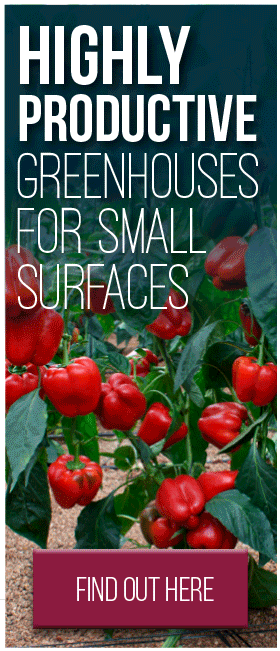Lighting installations can be classified into two types according to their application.
So for lighting installations for photosynthetic assimilation, we use facilities with high pressure sodium lamps. If the installation is aimed to the management of photoperiod, incandescent lamps are used.
Lighting for photosynthetic assimilation
The lighting for assimilation, to prolong the life of sodium lamps, on and off lighting support periods are set. For the production of electricity, since the installed electrical powers are enormous, cogeneration is used.
A generator produces the electricity needed from natural gas, waste heat is used to heat the greenhouse and CO2, once purified is also reused. When lighting installation support is stopped, the heat is stored in a storage tank. The controller, following an algorithm, automatically determines if the heat clarified in the greenhouse has to come from the co-generator, from the storage tank or the boiler. 78% of the energy used for lighting installation support is transformed into heat inside the greenhouse, reducing the demand from the boiler.
Photoperiod facilities
On lighting photoperiod facilities employed in cut flower crops (chrysanthemum, kalanchoe, paniculata, etc.), the duration of the photoperiod is controlled from a combination of the lighting and shading mesh. Control is accomplished by scheduling. In many cases, the lighting is provided with 20 on and 10 minutes off cycling applications.








